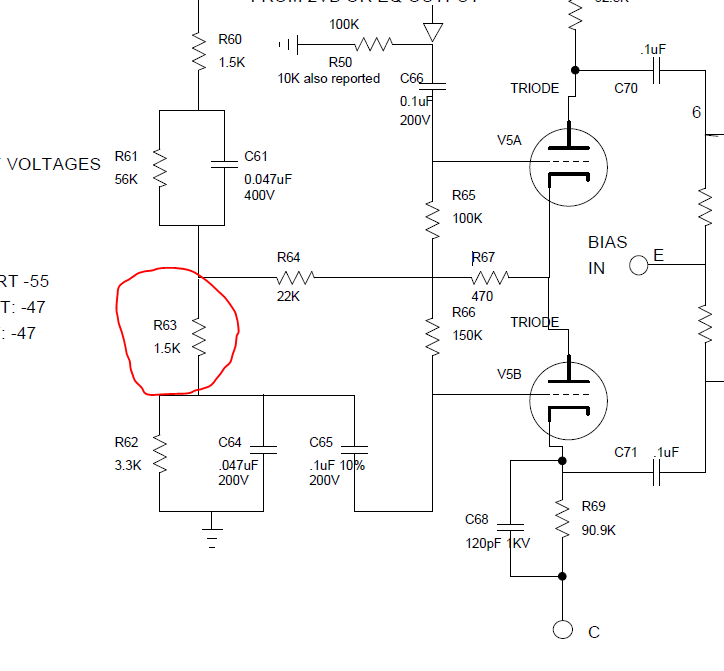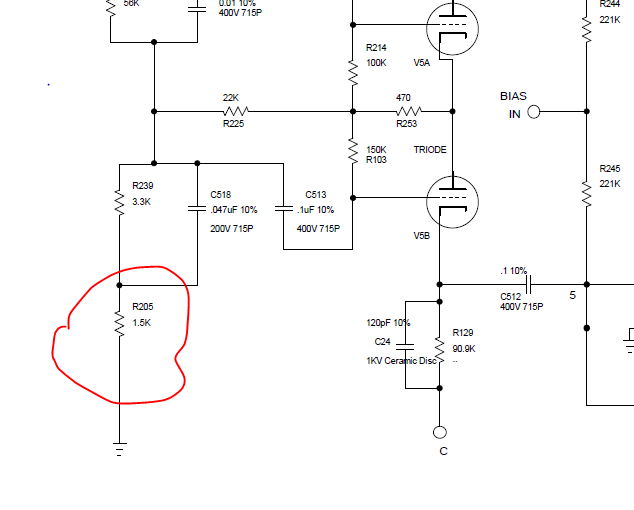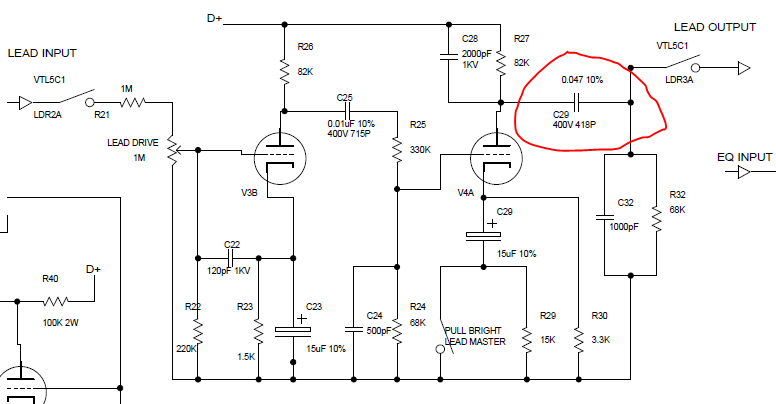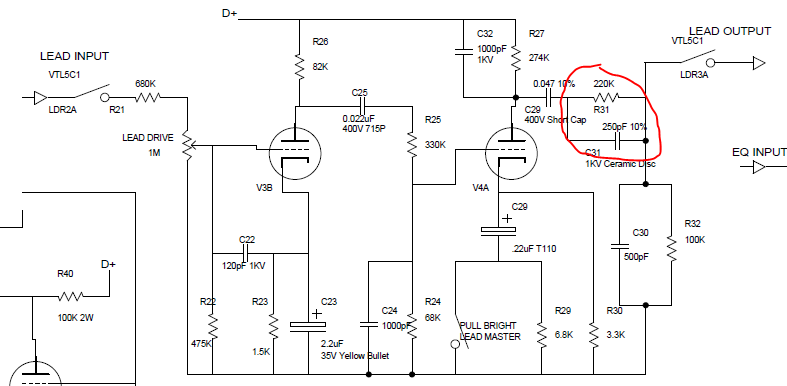One for the engineers out there! If you look up any schematic out there for the IIC+ and the III you'll see there is a 1.5K resistor in the power section going to ground. The IIC+ and III power sections are identical in these schematics with this 1.5K going to ground in both.
However, I've traced a IIC and compared to an upgraded IIC+ and noticed a big difference between the two in the placement of this 1.5K resistor as follows:
IIC+:

III:

I had already done a III+ mod with everything else identical to a IIC+, but left this 1.5K resistor stock until I made this discovery this week. I changed its placement in the power circuit of my III+ to be the same as the IIC+ this morning and noticed a massive change in sound! As in the amp is brighter and more trebley, it starts to distort on the clean channel around 7-8 on Volume 1 now and I have to turn it down to get a really nice clean. Overall it's less bold but more vintage sounding and feels a lot different.
This 1.5K resistor is left going to ground by Mike B when he does the III+ mod and also goes to ground in the Mark IV. Is this something that was a mistake by Boogie when moving to the III from using the mistaken schematics (I would assume they have some kind of master copy of a IIC/IIC+ design but you never know it could be in Mike B's head and they missed this!) or is this an upgrade due to a better power section design in the III and later?
I'm probably going crazy and I will put it back to stock just to confirm but is there anything from an engineering point of view that would explain this and whether one is better than the other, or is this so negligible a change that shouldn't have any effect?
However, I've traced a IIC and compared to an upgraded IIC+ and noticed a big difference between the two in the placement of this 1.5K resistor as follows:
IIC+:

III:

I had already done a III+ mod with everything else identical to a IIC+, but left this 1.5K resistor stock until I made this discovery this week. I changed its placement in the power circuit of my III+ to be the same as the IIC+ this morning and noticed a massive change in sound! As in the amp is brighter and more trebley, it starts to distort on the clean channel around 7-8 on Volume 1 now and I have to turn it down to get a really nice clean. Overall it's less bold but more vintage sounding and feels a lot different.
This 1.5K resistor is left going to ground by Mike B when he does the III+ mod and also goes to ground in the Mark IV. Is this something that was a mistake by Boogie when moving to the III from using the mistaken schematics (I would assume they have some kind of master copy of a IIC/IIC+ design but you never know it could be in Mike B's head and they missed this!) or is this an upgrade due to a better power section design in the III and later?
I'm probably going crazy and I will put it back to stock just to confirm but is there anything from an engineering point of view that would explain this and whether one is better than the other, or is this so negligible a change that shouldn't have any effect?
























